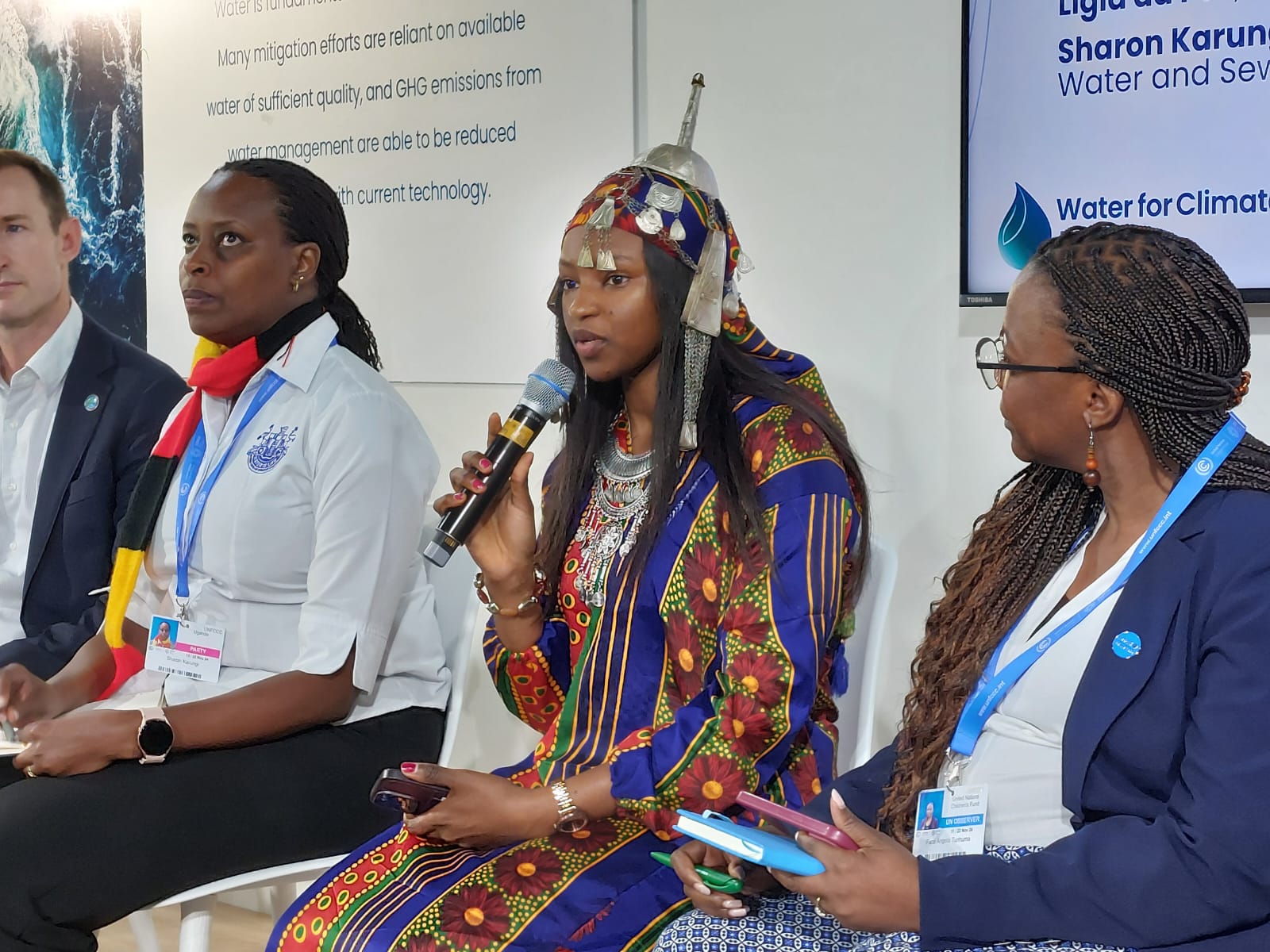
On day three of COP29, the Water for Climate Pavilion tackled the issue of urban water resilience - how to design it, how to fund it, and how to make sure it's just and inclusive for all. Here are four key takeaways from the conversation.
As climate adaptation takes center stage at COP29, cities are confronting an urgent dilemma: how to build resilience against an erratic climate.
According to the newly released 2024 State of Cities Climate Finance Report, cities will need a staggering USD 4.3 trillion annually for mitigation alone through 2030—and even more beyond, with financing needs climbing to over USD 6 trillion per year from 2031 to 2050. Yet, while cities account for over 70% of global carbon emissions, funding for urban climate adaptation remains critically low, amounting to just USD 10 billion, or a mere 1.2% of total urban climate finance.
These gaps have left city leaders scrambling to protect increasingly dense urban populations, now comprising 56% of the world’s population and projected to reach 70% by 2050. Rising temperatures and volatile precipitation patterns threaten to upend urban water systems and infrastructure, impacting everything from agriculture and local economies to the viability of entire communities. The question is not only how to scale up financing but also how to prioritize sustainable water management, ensure equitable transitions, and protect the economies of countries dependent on water-intensive industries.
On day three of COP29, the Water for Climate Pavilion tackled the issue of urban water resilience – how to design it, how to fund it, and how to make sure it’s just and inclusive for all. Here are four key takeaways from the conversation.
The panel stressed that for cities to become resilient to climate change, finance must effectively reach local communities. Many cities lack the fiscal power and resources to implement necessary climate strategies, especially in low-income areas where the impacts of climate change are felt most acutely.
If cities are part of the solution, they must be empowered to be a part of the solution and fiscal empowerment is critical,” said Shipra Narang Suri, Chief Urban Practices Brand, Global Solutions Division, UN Habitat
“There’s no capacity or much needed finance flowing down to the communities to be able to deal with [climate change] impacts, but also to enable them to scale up solutions that they are already leading on the ground,” said Elizabeth Wathuti, Youth Commissioner, spearheading the the Global Commission on the Economics of Water Youth Water Agenda
Panelists highlighted that for urban climate resilience to be genuinely effective, local communities must be at the heart of decision-making. Climate disasters—such as frequent floods, prolonged droughts, and severe weather events—disproportionately affect urban communities, especially those with limited socioeconomic resources, deepening cycles of poverty and driving forced migration. Empowering communities to participate actively in decision-making processes is essential to ensure resilience strategies reflect local priorities and needs.
“Cities are in a really unique position to deliver climate resilience due to their concentration of economic activity, their dense social networks, the agile nature of local government and the tradition of innovation,” said Louise Ellis, Associate Director at ARUP
“What drives [climate resilience]? It’s the people. It’s their agency, to be able to say what they want, the systems they want to be protected – whether it’s cities, whether it’s their estuaries or mangroves, or freshwater systems or upstream catchments,” said Shuchi Vora, Head of Learning, Global Resilience Partnership
“To find a solution, we need to put the community first. You have to ask the community first – what is the priority: Water? Food security?” said Merem Tahar, Special Youth Envoy of the PR of the UN Convention to Combat Desertification COP15 and first woman to represent the Toubou people of Northern Chad
Panelists underscored the need for long-term financing strategies that can overcome barriers to investment in water infrastructure. Given the high upfront costs and extended timelines associated with many urban resilience projects, typical investors—especially venture capitalists—are often hesitant to commit due to the delayed financial returns. This gap in long-term funding not only slows essential progress in urban water infrastructure but leaves cities vulnerable to future climate-induced crises.
Panelists advocated for the development of “patient capital” – investment that prioritizes long-term gains and is willing to accept risks in exchange for broader societal benefits. Government intervention is essential, panelists noted, in creating favorable conditions that de-risk urban resilience projects, making them more attractive for private sector investments.
“In Spain, we need to change regulation law. If private funds want to invest in the water sector, they need to earn money. We have a limitation for profits in this kind of investment,” said Sergio Arjona Jiminez, Vice Minister for Sustainability and Environment, Junta de Andulucía.
“For too long, water has been undervalued with financing often limited to immediate needs and low-risk projects…Financing is also about sharing risks across different stakeholders: governments, private sector, civil society, multilateral institutions. You may actually unlock greater flows from both domestic and international sources,” said Ingrid Hoven, Managing Director, Deutsche Gesellschaft für Internationale Zusammenarbeit (GIZ)
To achieve true urban water resilience, panelists emphasized the importance of designing and financing solutions that prioritize justice and inclusivity. Urban resilience cannot succeed if it only benefits select populations or leaves vulnerable groups behind. Such approaches also recognize the social and transactional costs involved in infrastructure projects, aiming to direct resources toward those disproportionately affected by climate change.
“If there is a value attached to something, money will flow in that direction. Justice is central to that value,” said Shuchi Vora, Head of Learning, Global Resilience Partnership
When it comes to just water partnerships: how do water utilities work with communities in the cognition that water does not come from the taps. It comes from the catchments and other water sources that are continuously being depleted,” said Elizabeth Wathuti, Youth Commissioner, spearheading the the Global Commission on the Economics of Water Youth Water Agenda